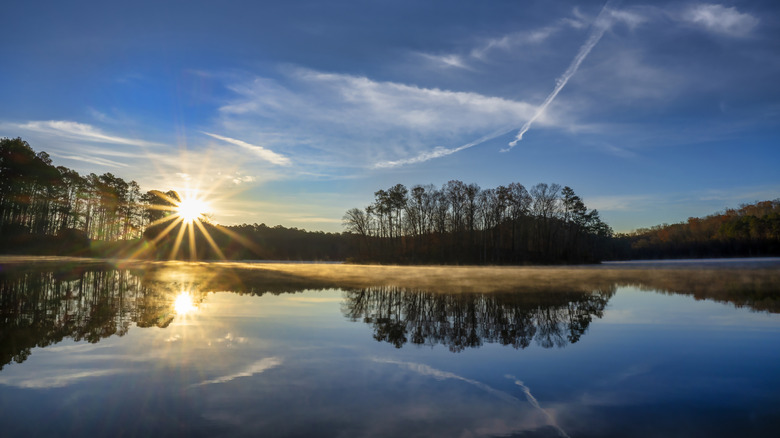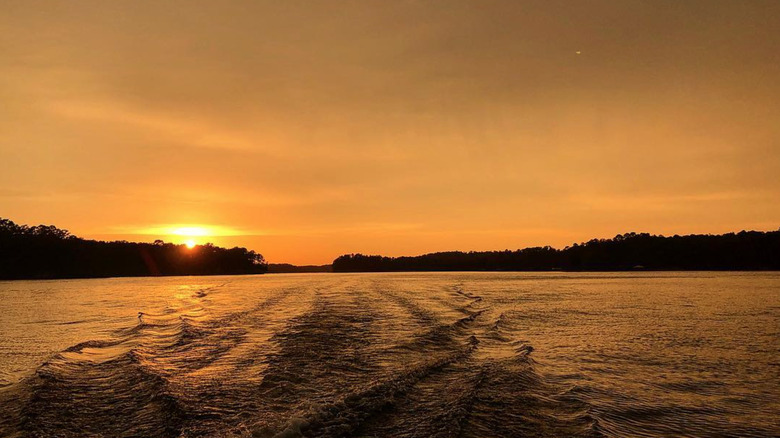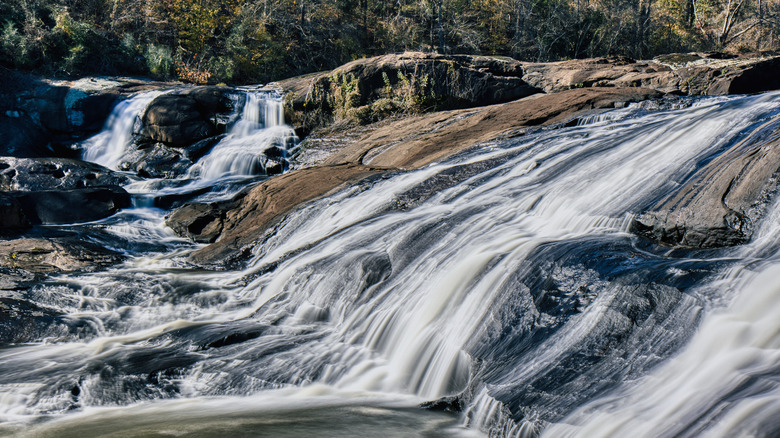This City In 'Georgia's Outdoor Capital' Is A Bold Mix Of Lake Outings, Waterfall Hikes, And Mineral Spring Mornings
Georgia is a haven for nature lovers and outdoor enthusiasts. It brims with hidden places that lead to extraordinary sights. From ancient wetlands and cascading waterfalls to sun-scorched canyons and windswept barrier islands (including Cumberland, where wild horses roam free), the state's landscape is shaped by untamed beauty and astonishing variety. Amidst all this natural wonder lies Jackson, a rural city within a county crowned "Georgia's Outdoor Capital," where the land consists of quiet shores, winding trails, and a place of healing that has drawn visitors for generations.
Located between the dynamic pace of Atlanta and the soulful sounds of Southern rock in Macon, Jackson spans a modest 4.7 square miles. More than 5,800 people call it home, but countless others have wandered into the city to soak in the surrounding beauty. It boasts one of Georgia's oldest reservoirs, which has today transformed into a peaceful retreat for visitors. Not far from there are two distinct state parks: One showcases waterfalls nestled within forested trails, and another is known for its flowing mineral spring. Together, these scenic spots make Jackson the perfect destination to unwind.
Discover adventure and calmness at Jackson Lake
Roughly 50 miles southeast of the world's busiest airport, Jackson Lake covers 4,750 acres and stretches into three counties, including Butts County. While it appears natural, it was formed in the early 1900s when a power company built a dam to produce energy in the region. Erosion kept the water murky for years, but more than a century later, it has finally cleared. What once served a single purpose now draws visitors who are looking for a serene place to relax and explore.
With 135 miles of shoreline, there's plenty of space to spread out a picnic, cast a line, or just kick back and enjoy the view at Jackson Lake. Travelers can glide across the calm waters by boat or power through it by a jet ski. Anglers who wait patiently from one of the many shaded coves have a good chance of hooking a variety of fish, including bass and bluegills. Those who stay long enough might spot herons wading through the waters, deer emerging under the trees, and a sunset that turns the sky every shade of orange and gold. While there are limited camping options on the lake itself, nearby state parks offer more places to pitch a tent and settle in under the stars.
Explore waterfall trails and mineral springs in Jackson's state parks
High Falls State Park is one of Jackson's top spots for camping. Encompassing 1,050 wooded acres, it features wide-open campsites, cozy yurts, a rocky forest, and a waterfall that crashes into the Towaliga River. The park offers three hiking trails, each named for the experience it offers.
The Tranquility Trail is the longest at 2.5 miles and provides a peaceful trek through rolling woodlands and streams. The Falls View Trail, at 1.5 miles, is considered strenuous, with large boulders underfoot. Those who stick with it are rewarded with a view of a waterfall that plunges more than 130 feet into the river. The shortest and most accessible trail is the half-mile Historic Trail. It's ADA-friendly and rich with history. Along the way, visitors pass remnants of the Old Alabama Bridge, the historic dam, and a grist mill that speaks to the area's industrial past. About halfway through, an overlook offers a vantage point of the falls. No matter which path you take, you pass native plants and might catch glimpses of the many animal species that call High Falls home.
Tourists who are craving a different kind of natural experience could take a short 15-minute drive northeast to Indian Springs State Park in the neighboring city of Flovilla. Long before it became a state park, the area was home to the Creek Nation, who believed in the healing power of the mineral-rich spring water bubbling up from underground. The spring's sulfur scent comes from minerals such as arsenic, which is said to ease skin and muscle issues, along with sodium sulfate and calcium carbonate, believed to benefit the liver and kidneys respectively. Today, visitors still gather to collect water from the artesian wells and take home a bit of this storied spring.


